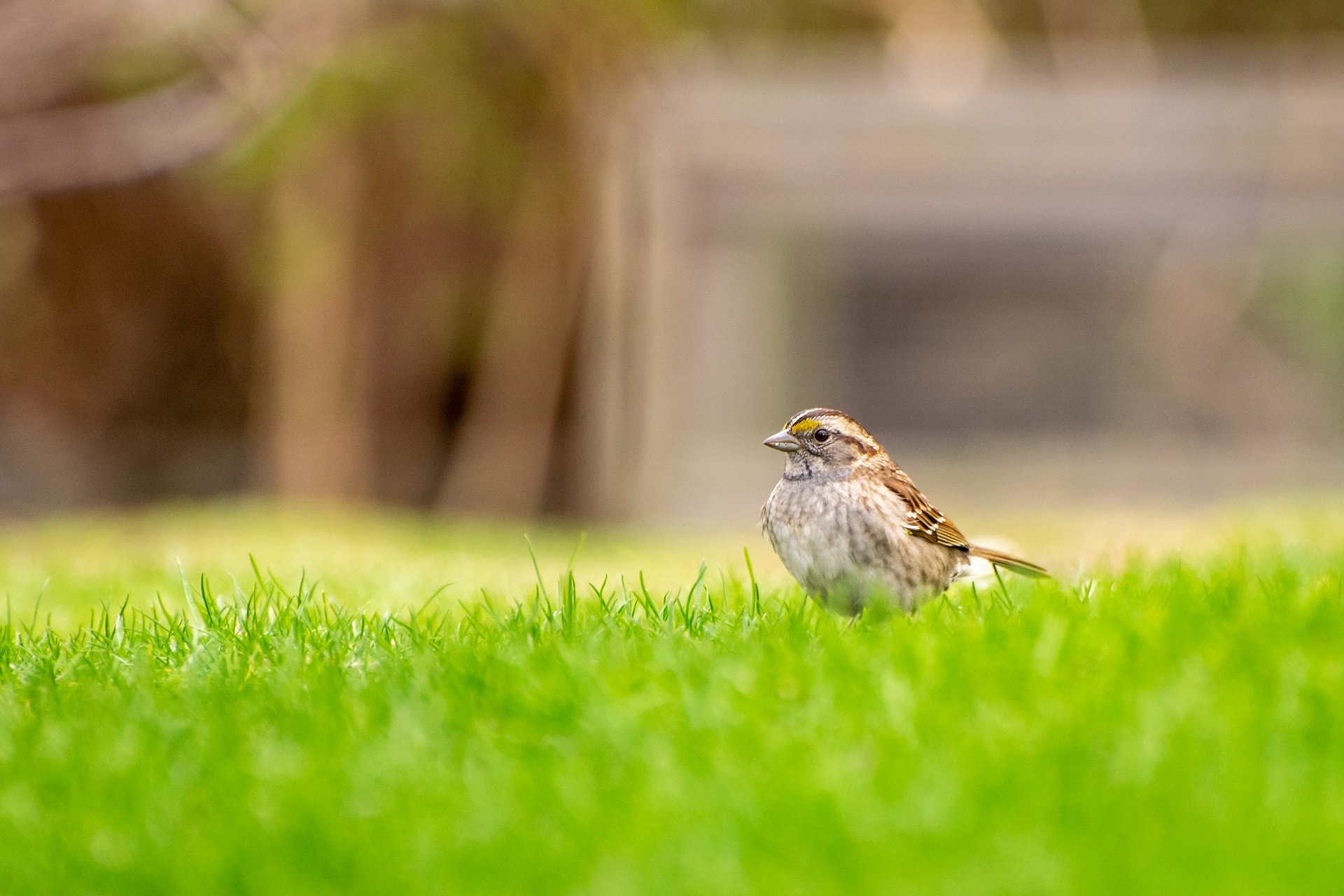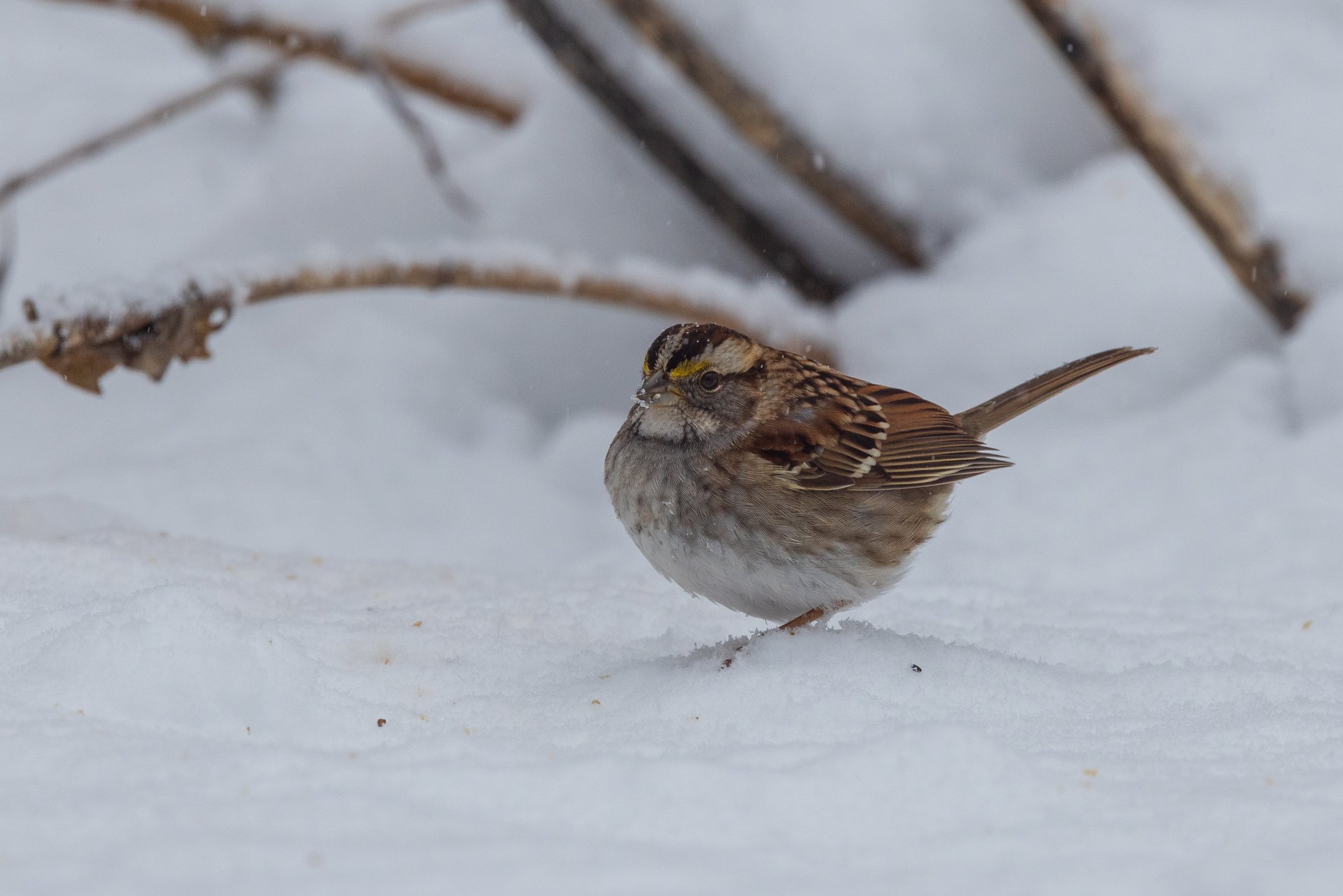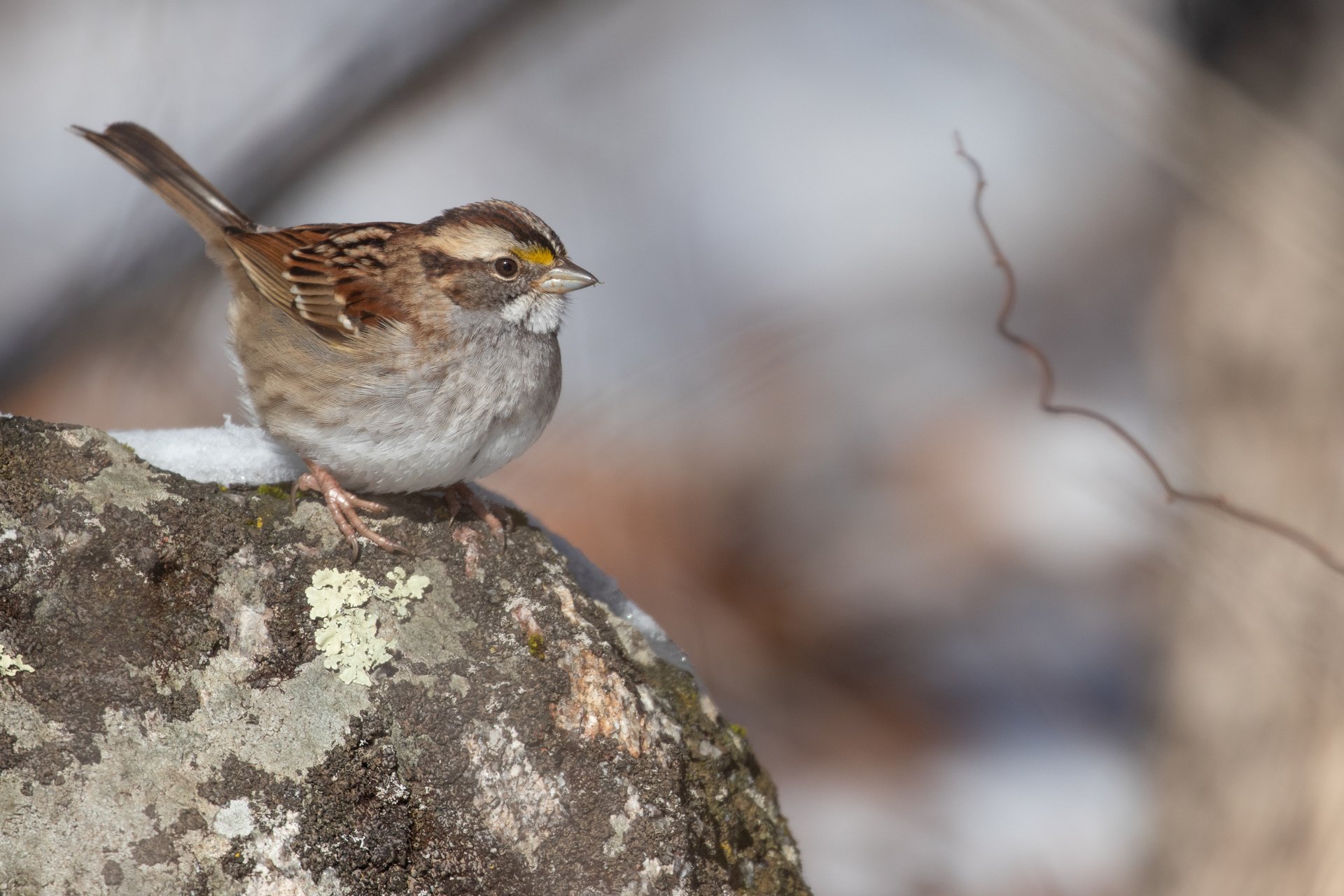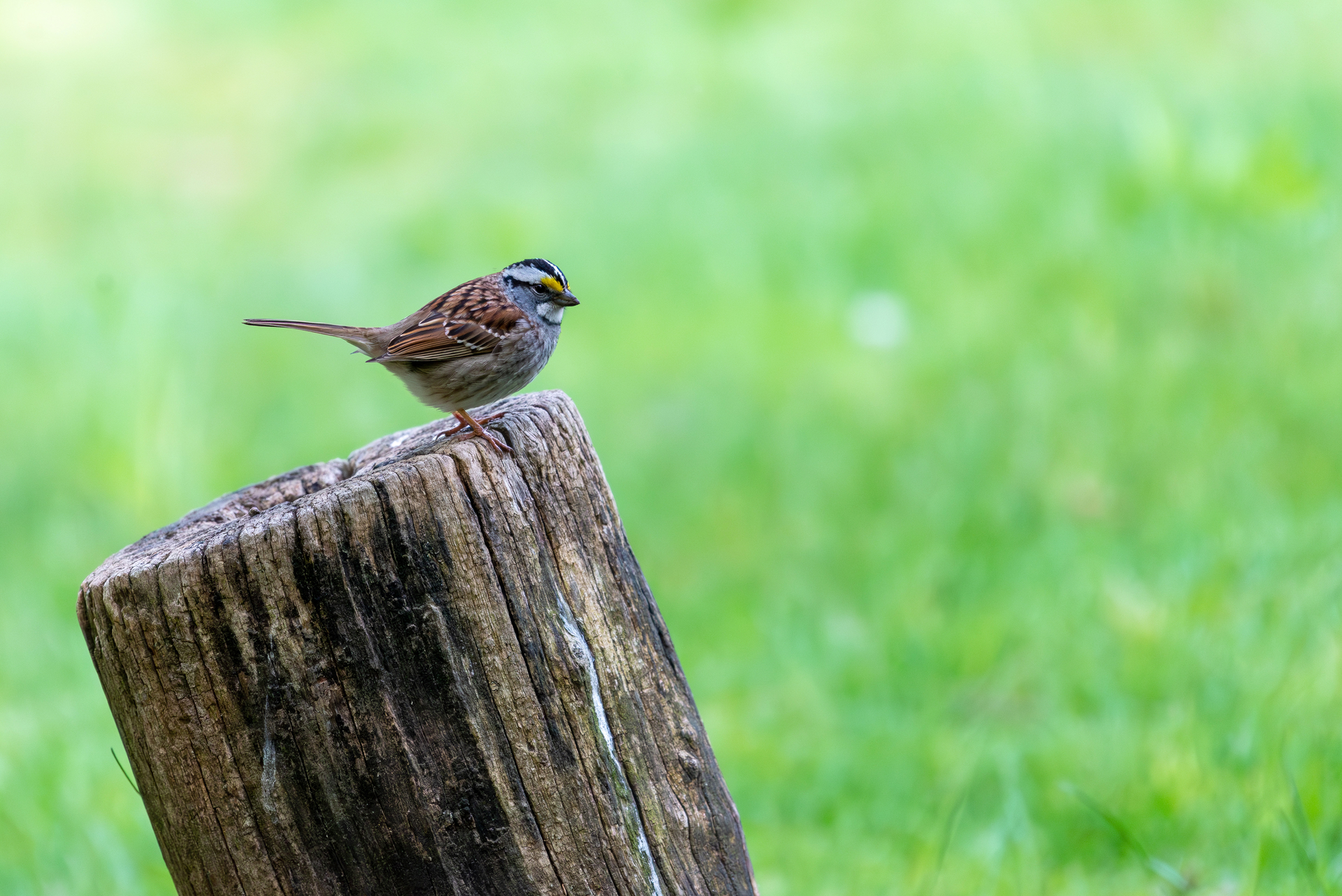White-throated Sparrows
Every spring, the northern woods are filled with the echoing, whistled songs of White-throated Sparrows. During the winter, these boreal forest songbirds migrate southward, and many of them pass the colder months with us in New England.
In all seasons, White-throated Sparrows are denizens of brushy areas with plenty of undergrowth to hide in.
How to Identify White-throated Sparrows
White-throated Sparrows are fairly large (just shy of 7” long, on average), heavy-bodied sparrows, and they show a significant reddish cast to their brown wing and back feathers. Some individuals have tan stripes on the crown, while others show white stripes, but all adults share the snow-white throat patch for which the species is named.
Their grayish breasts show faint streaks, or none at all. At close range, two bright yellow spots just behind the bill and in front of the eyes (the “lores”) are sometimes visible.
White-throated Sparrow Behavior
White-throated Sparrows are not uncommon visitors to Massachusetts in the winter-time, and they are most often encountered either singly or as part of a mixed flock, often with dark-eyed juncos. They will take seeds from feeders (or, more often, the ground below feeders), but they will seldom come out to feed unless there is a thicket or hedge nearby for them to shelter in.
White-throated Sparrow Song
Their song is very distinctive: a slow, clear whistling following the cadence Poor Sam Peabody, Peabody, Peabody!
Threats Facing White-throated Sparrows
Habitat Loss
Winter numbers of White-throated Sparrows seem to be stable or increasing in Massachusetts. Unfortunately, the same cannot be said for our breeding birds. Loss of young forest and shrubland habitat on which White-throated Sparrows depend has caused this species to decline considerably as a breeder in Massachusetts.
How Mass Audubon is Supporting Birds in Massachusetts
Mass Audubon works at our wildlife sanctuaries and beyond to ensure that the nature of Massachusetts continues to thrive. By scientifically monitoring Massachusetts birdlife, Mass Audubon informs important conservation decisions and launches targeted initiatives to help at-risk species. In addition, fostering healthy habitats, supporting native species, and educating people about the importance of nature conservation is critical to our success. Learn more about our work
How You Can Support Birds in Massachusetts
Mass Audubon supports birds like the White-throated Sparrow every day, but we couldn’t do it without the support of our 160,000+ members.
Help support White-throated Sparrows, and birds like them, by becoming a member today.
Upcoming Bird Programs
See MoreBird Research in Action
-
Wellfleet Bay Wildlife Sanctuary, South Wellfleet
-
Friday, November 1
9:15-10:15am
Adults & Families - 8 & up
Level Up Your Birding: Waterfowl on Berkshire Lakes
-
Pleasant Valley Wildlife Sanctuary, Lenox
-
2 classes starting
Friday, November 1
5:00-6:30pm
Adults
Saturday Morning Birding
-
Broadmoor Wildlife Sanctuary, Natick
-
Saturday, November 2
8:00-10:00am
Adults
Stay Connected
Don't miss a beat on all the ways you can get outdoors, celebrate nature, and get involved.






